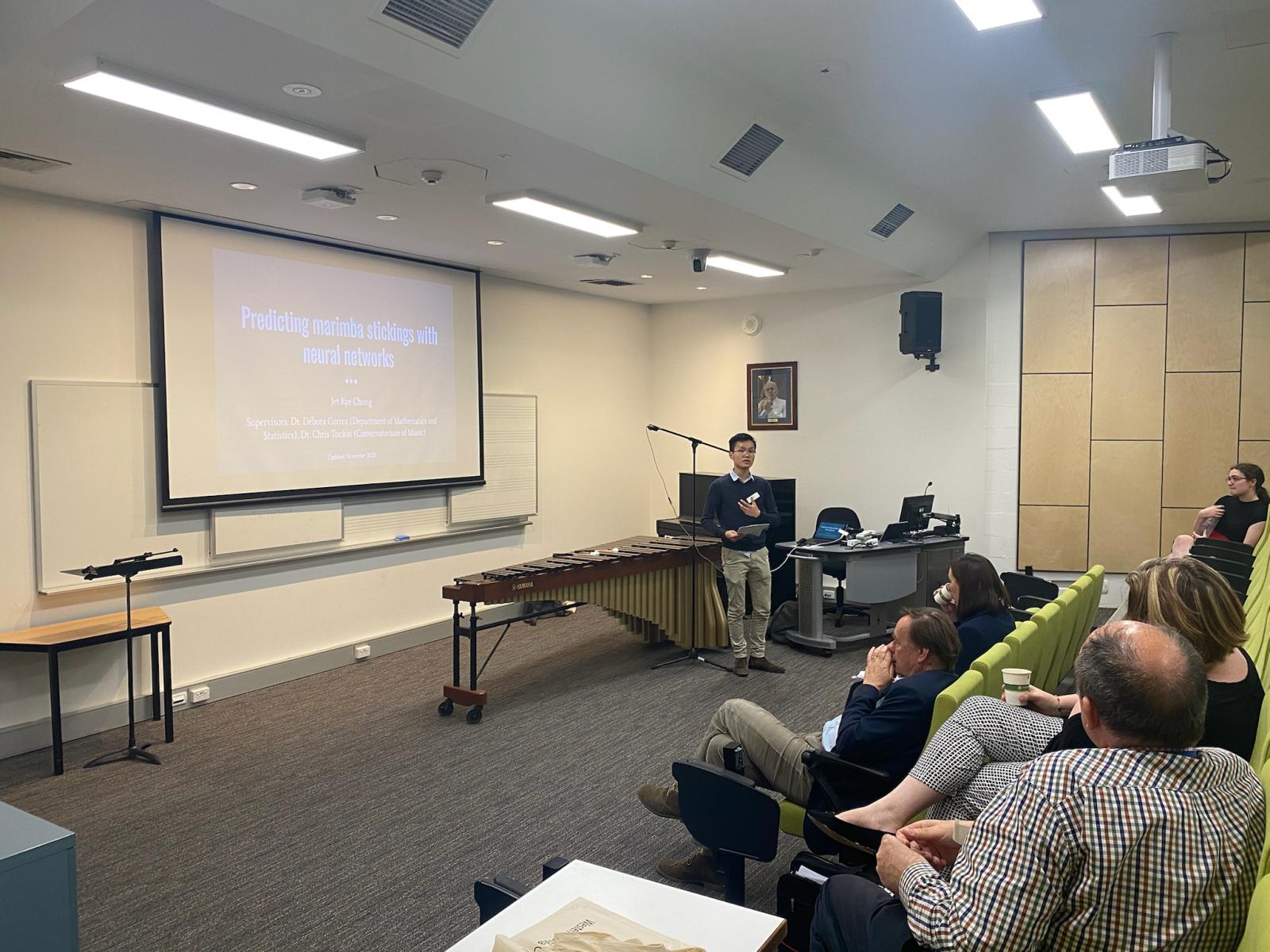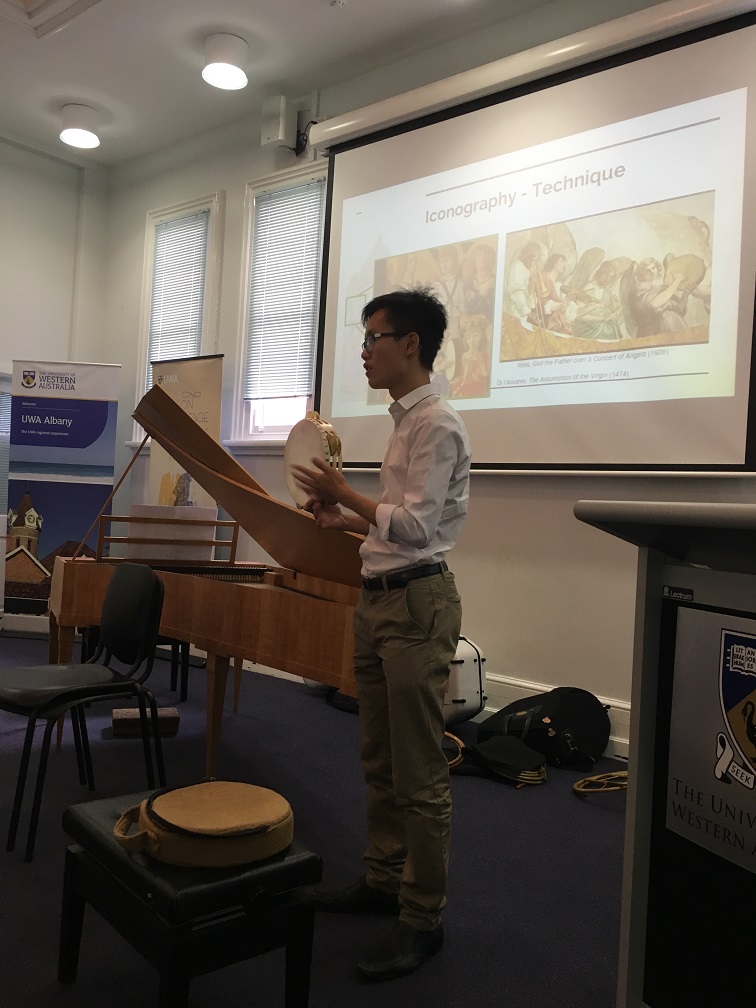research
Illustration: Eljo Agenbach
The excerpts of my research below only scratch the surface on each topic. If you are knowledgeable on the topics or would like to learn more, I would love to get in touch!
Predicting Marimba Stickings with Neural Networks
Abstract: In marimba music, ‘stickings’ are the choices of mallets used to strike each note, and they significantly influence both the physical facility and expressive quality with which the music may be played. Choosing ‘good’ stickings and evaluating one’s stickings are necessary steps in learning music, but they can be slow and difficult tasks, often relying on trial-and-error vaguely guided by past experience. This is the ‘sticking problem’, which can impede technical and musical development, and hinder the learning of music. In this study, a machine learning approach is employed to address the sticking problem by predicting and annotating stickings in 4-mallet marimba music as suggestions for marimbists. A 32,000-sample dataset is constructed from exercises in Leigh Howard Stevens’ Method of Movement for Marimba by digitally transcribing the pitch and duration data of notes in each exercise, then iterating through keys, ranges on the instrument, and valid sticking annotations. Long Short-Term Memory (LSTM) neural networks with a range of hyperparameters are constructed and fit to this dataset. K-Fold cross validation and qualitative testing are conducted on the models, yielding a maximum quantitative accuracy 64.58% from a sigmoid-activation bidirectional LSTM model, and fairly consistent qualitative scores across models. The discrepancies between quantitative and qualitative metrics suggest a need for expanded datasets, but promising results invite further development and study in this field.


Tambourine Accompaniment in the 16th and Early 17th-century Chacona

Excerpt: Dance and music have been inseparable facets of human culture around the world for centuries, from their joint role in countless traditional ceremonies to the 21st-century dance floor. In the Western Art music tradition alone, dances occupy a large portion of the repertoire, and of these various forms, among the most significant is the chaconne. The roots of this elegant and stately triple-metre dance lie in 16th-century Spain, where it existed as the chacona – a vigorous, lascivious and morally objectionable dance wildly popular among the lowerclass, and heavily condemned by the Church. The dance was reputedly infectious, with even members of clergy unable to resist its seductive movement, as it spread through Naples into Italy, then later into other parts of Europe evolving into the Italian ciaccona, the English chacony, and the French chaconne. Even today, the few historically informed modern recordings of the chacona (such as by Jordi Savall or the Australian Brandenburg Orchestra) captivate the ear and body with bright harmony and galloping rhythmic syncopation. Indeed it is the rhythm that is of interest in this research. The chacona is documented to have been accompanied by tambourines and castanets, such as in the poetry of Marino and plays of de Vega.
This study aims to fill this essential rhythmic knowledge for
the performance of the chacona with a focus on the tambourine, to construct a historically-informed tambourine accompaniment by employing 16th-century Spanish tambourine techniques and creating stylistically appropriate rhythmic ostinati that incorporate 16th-century styles of improvisation and variation. In absence of primary musical sources for the chacona, slightly more distant primary sources will be analysed to theorise on such performance – primarily studying iconography of tambourine players around the Renaissance to determine characteristics of technique, and extrapolation of the rare percussion-oriented 16th-century treatise, Orchésographie, and guitar treatises to construct the rhythms of accompaniment. As these sources are not situated in the context of the chacona, extensive historical research of the music and dance by Hudson and Walker will be central to grounding the context throughout the study to ensure that any historically-informed choices extrapolated from the other sources remain true to serving the affect of the chacona.
